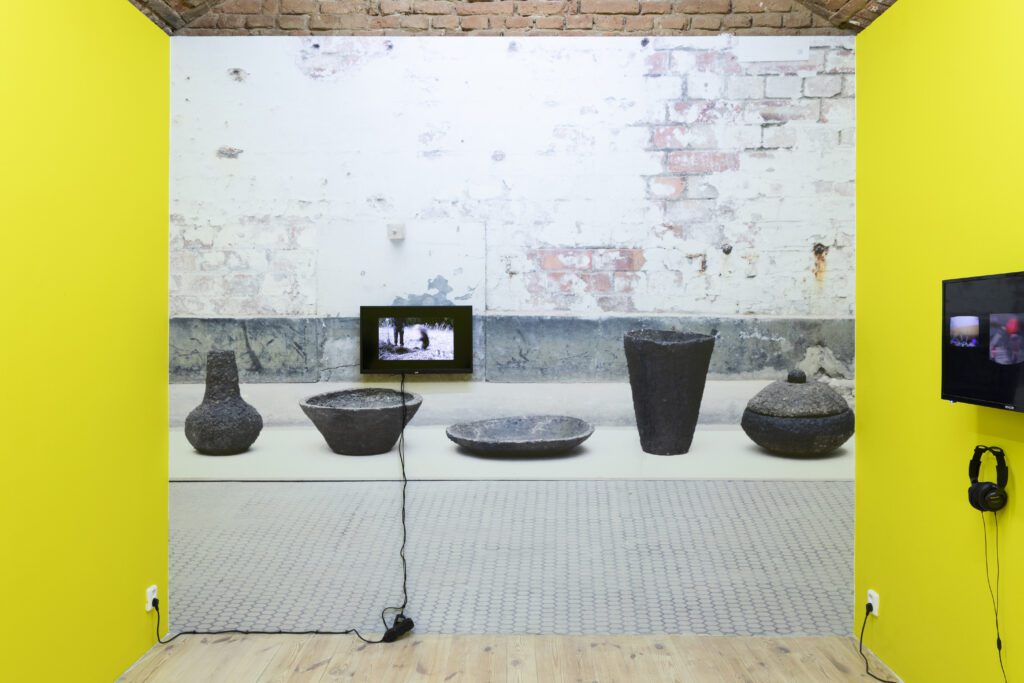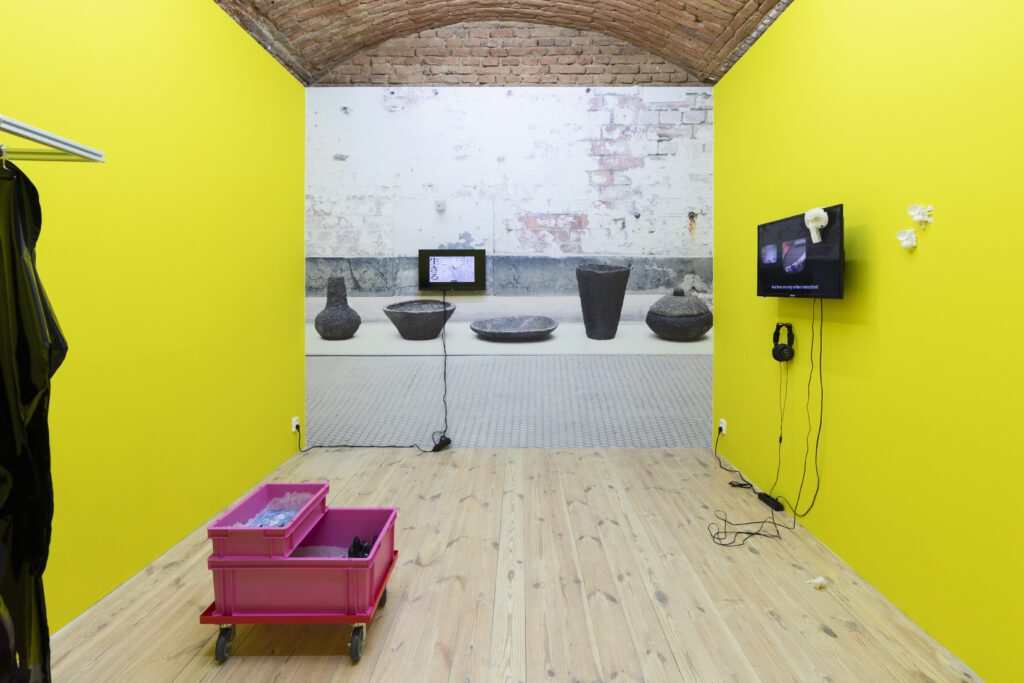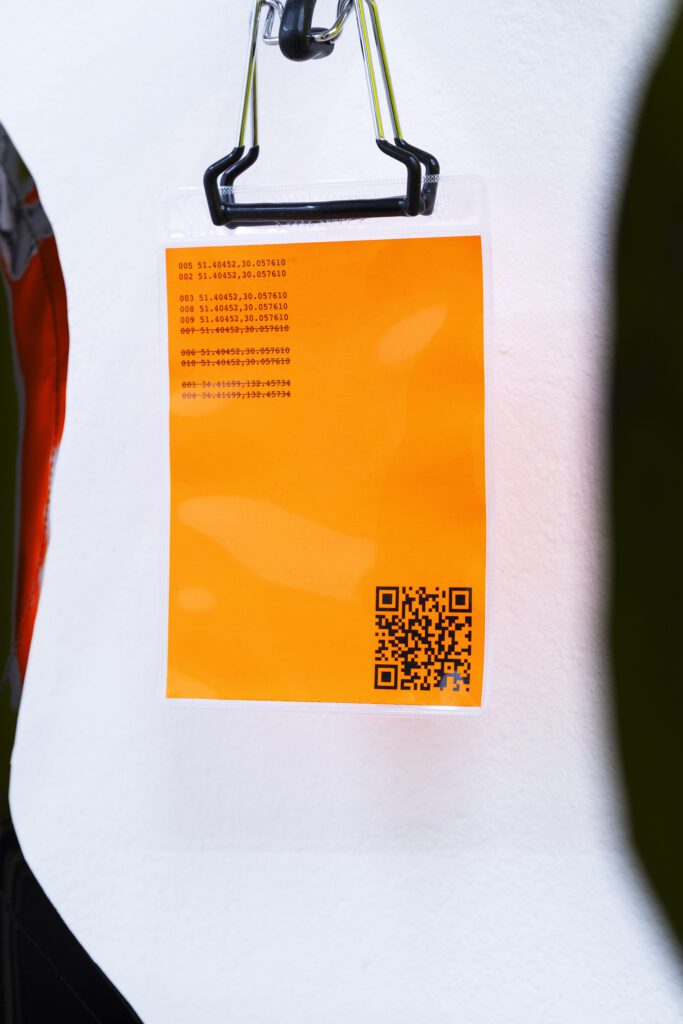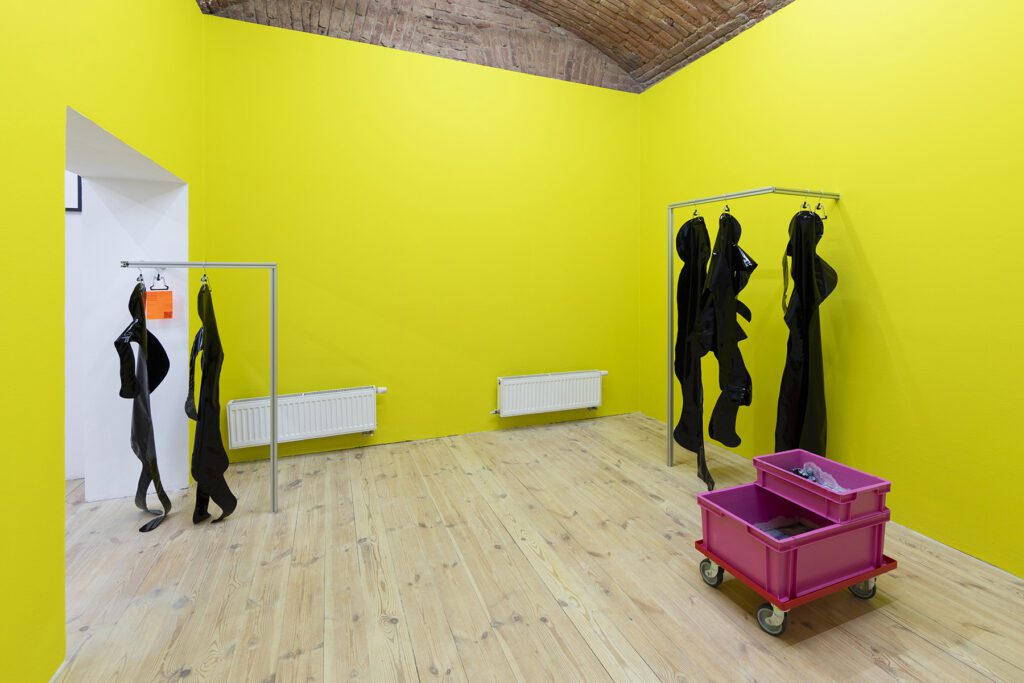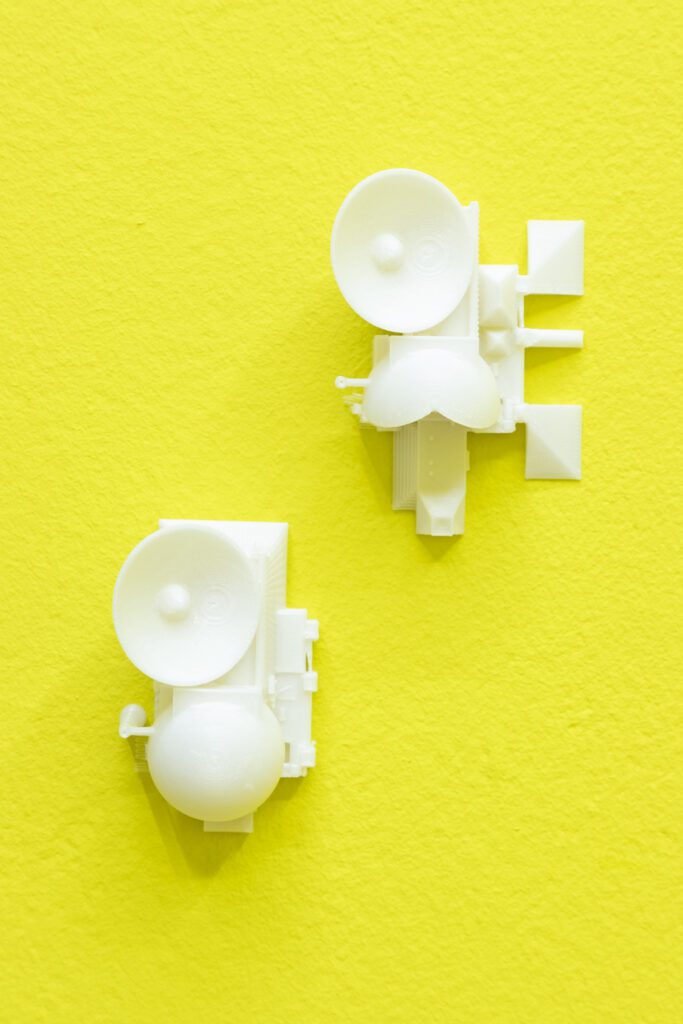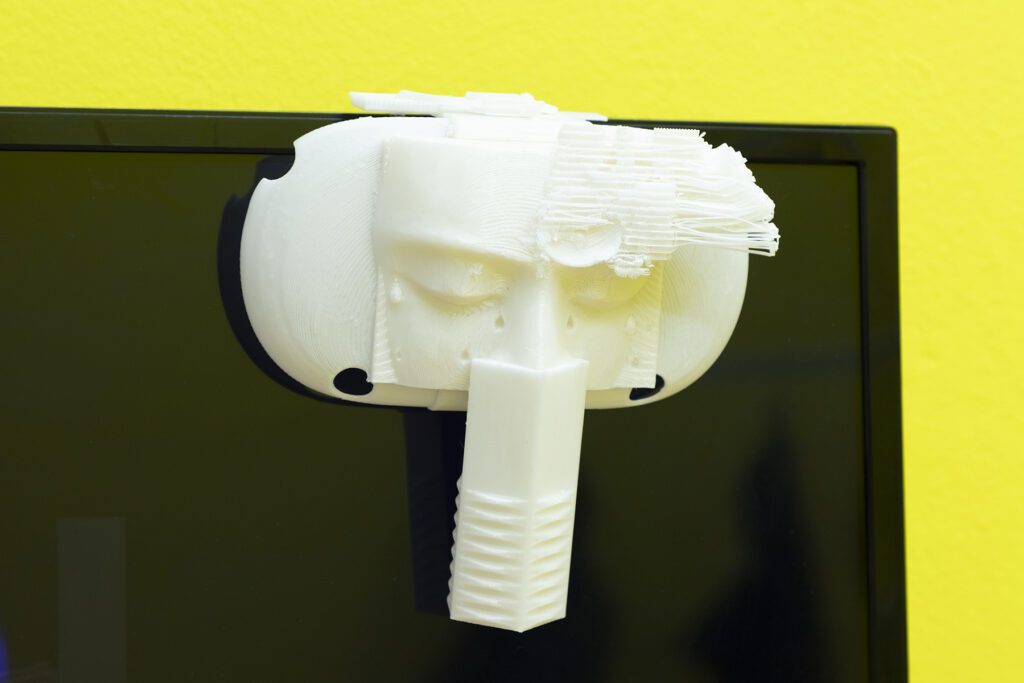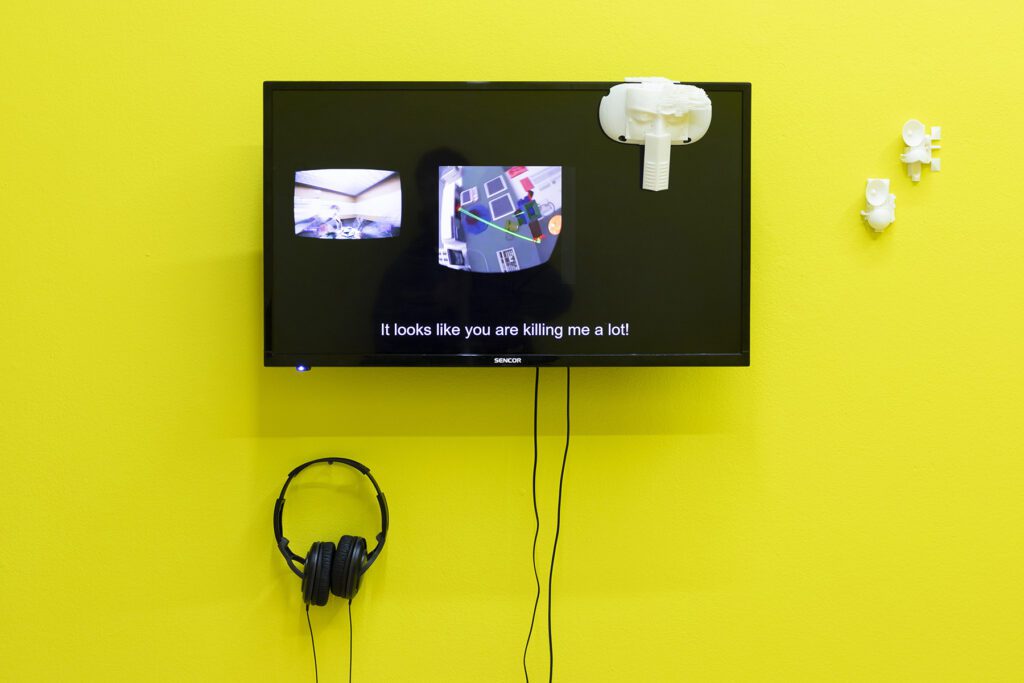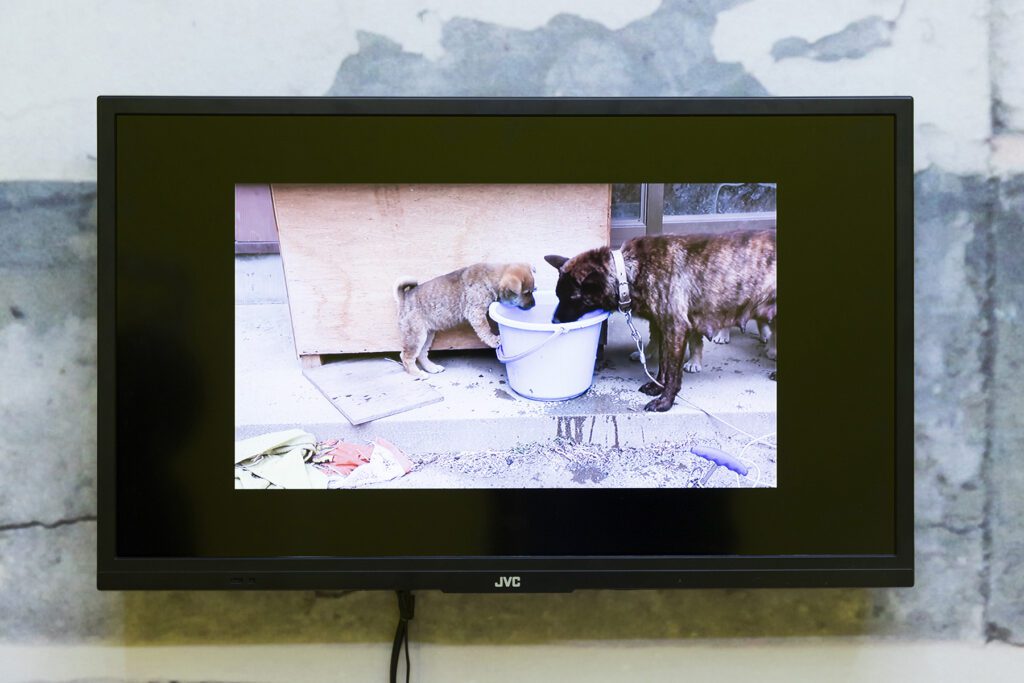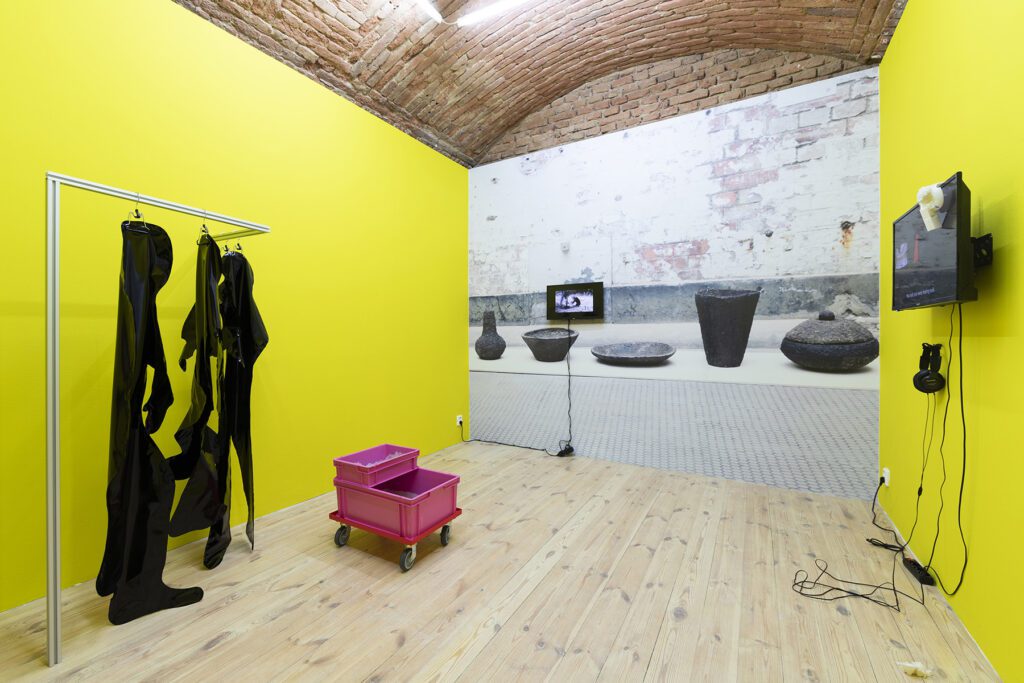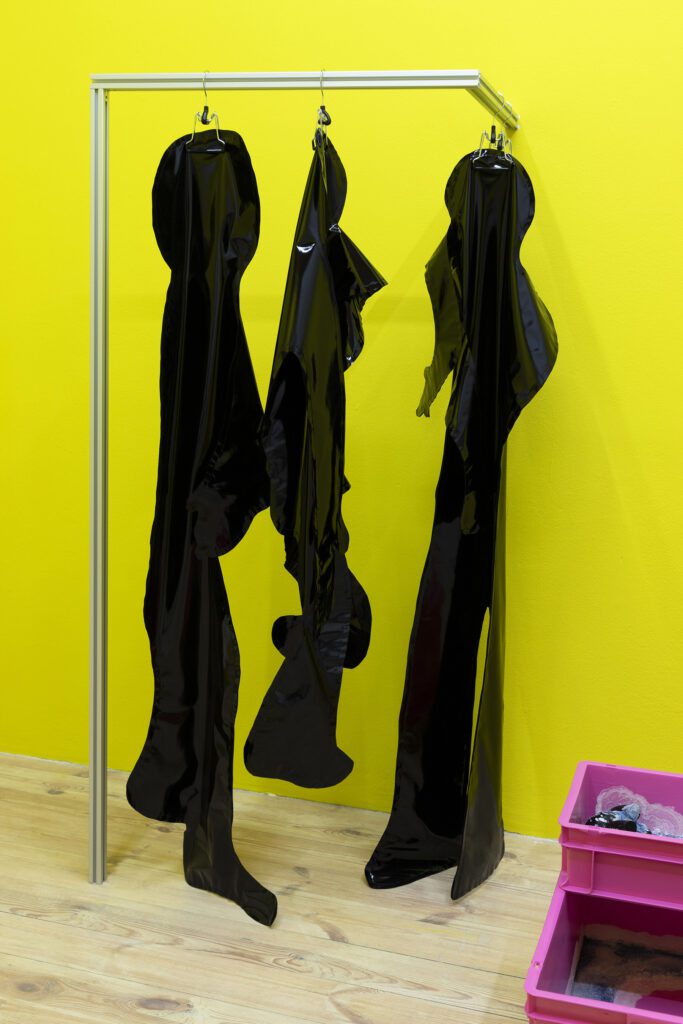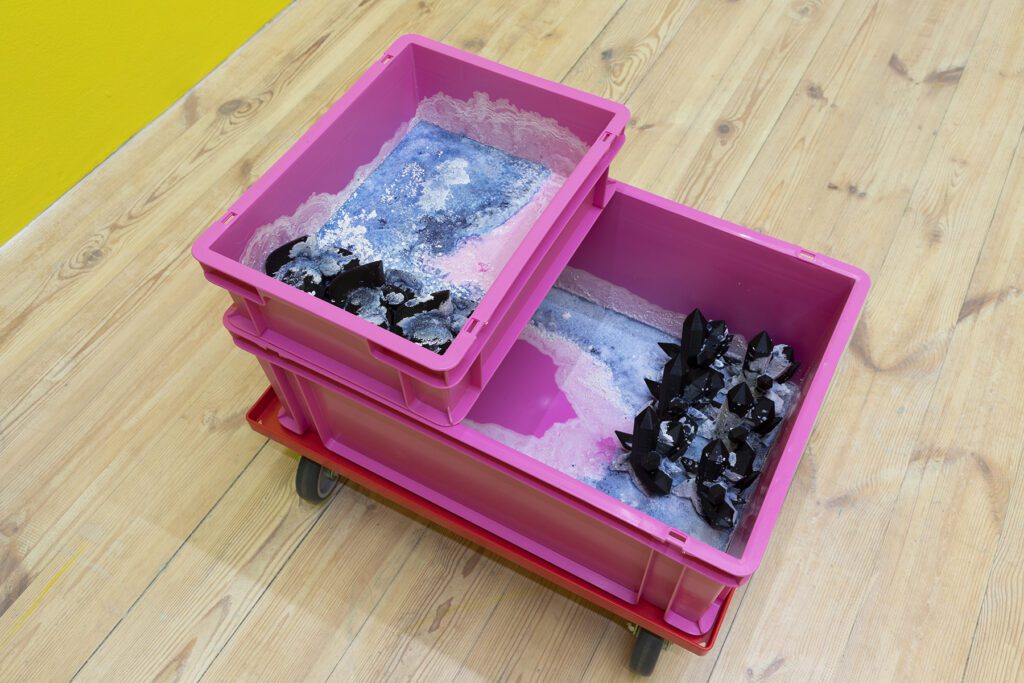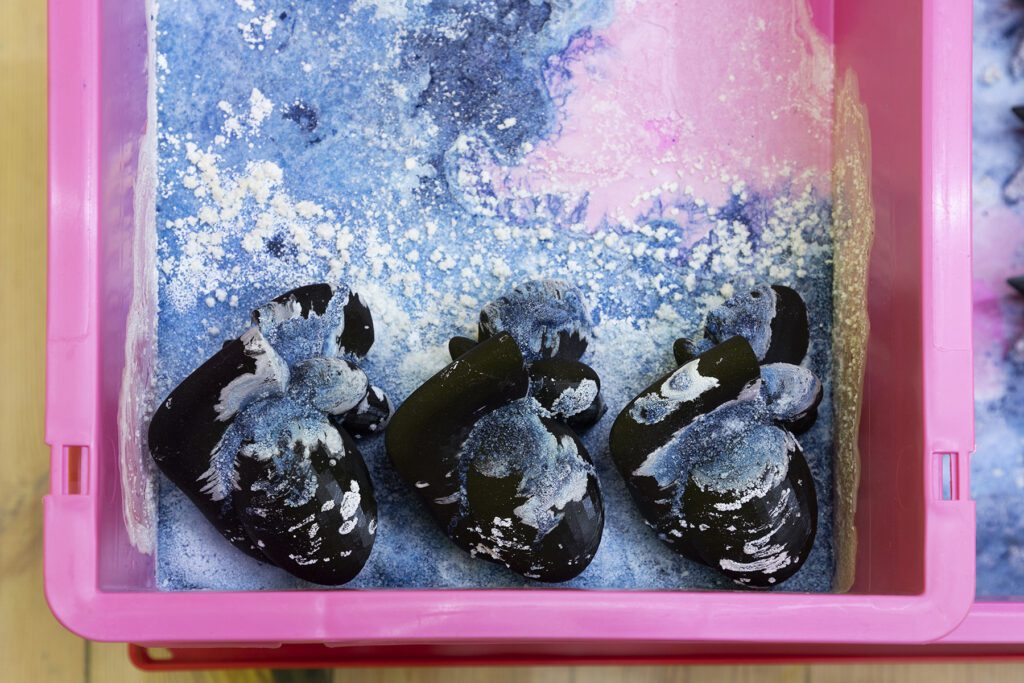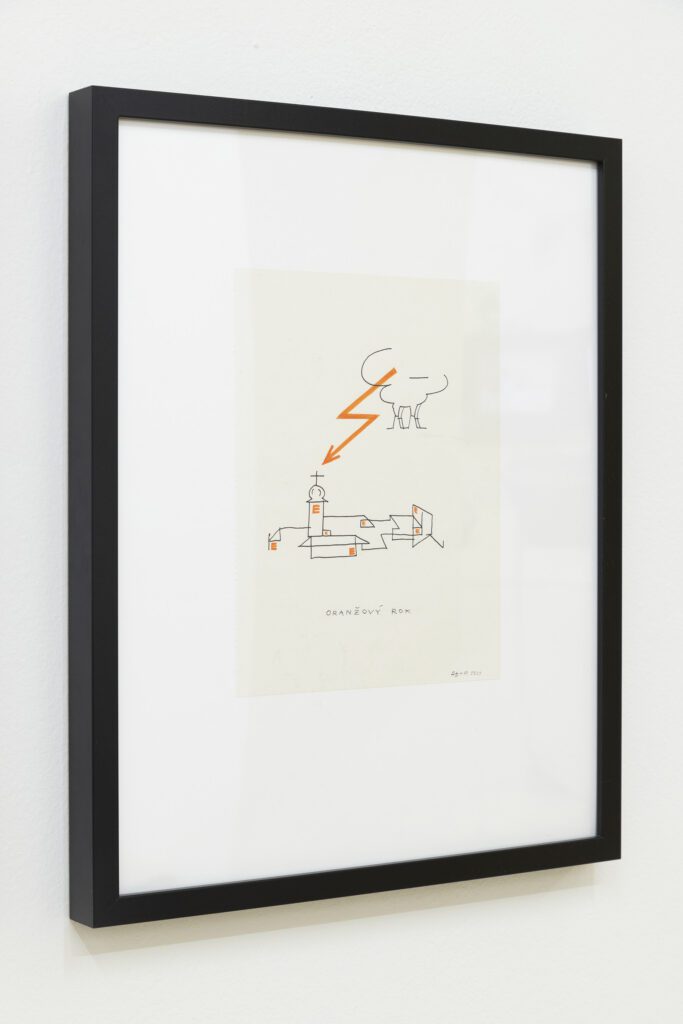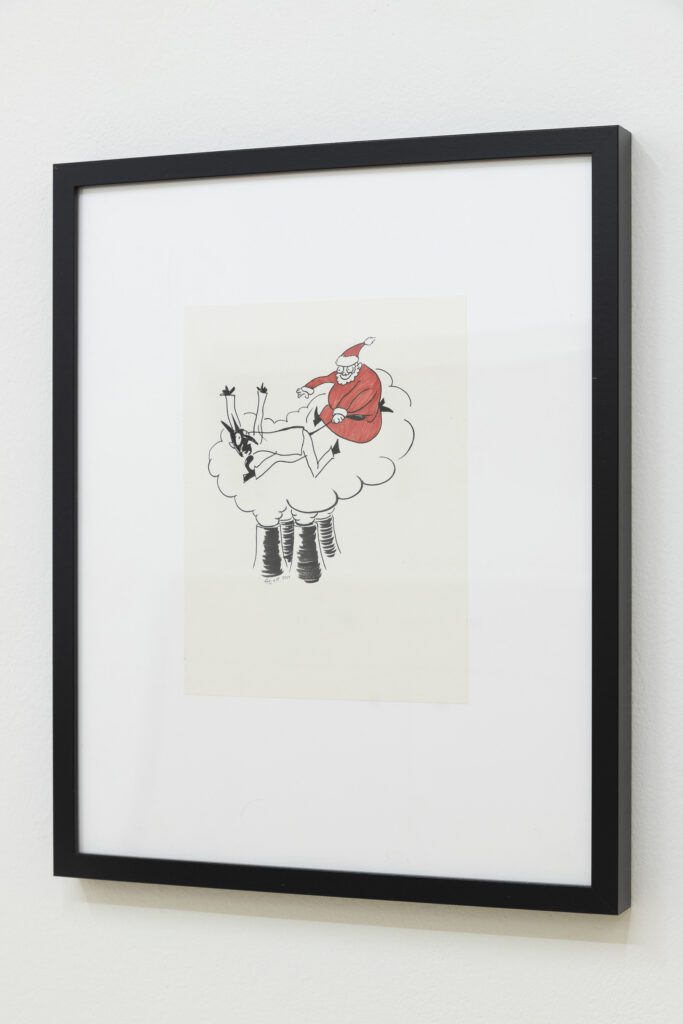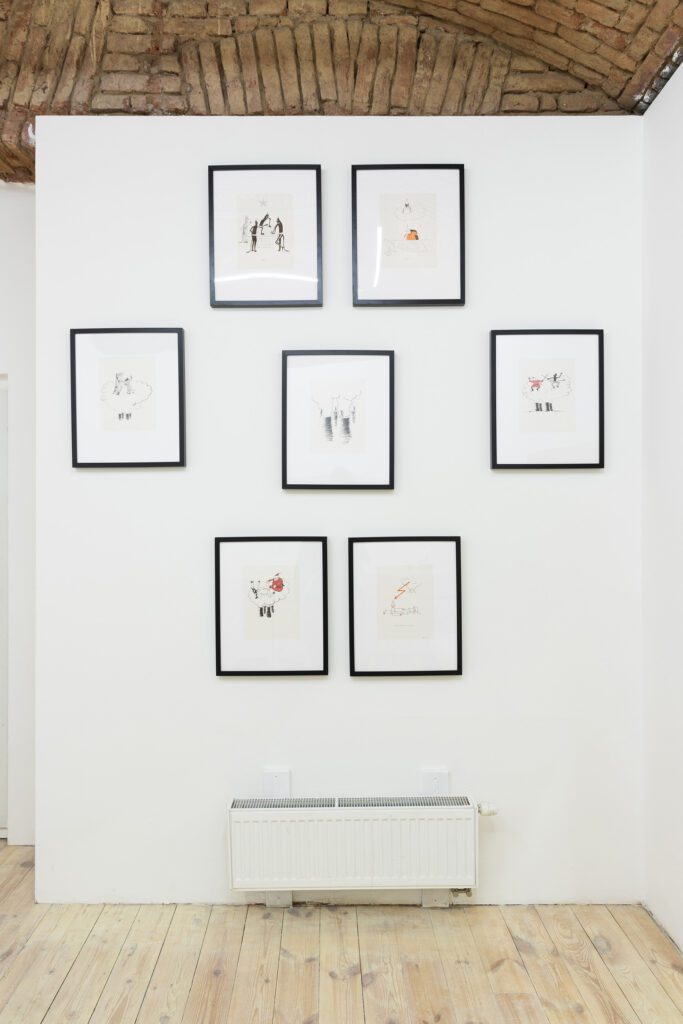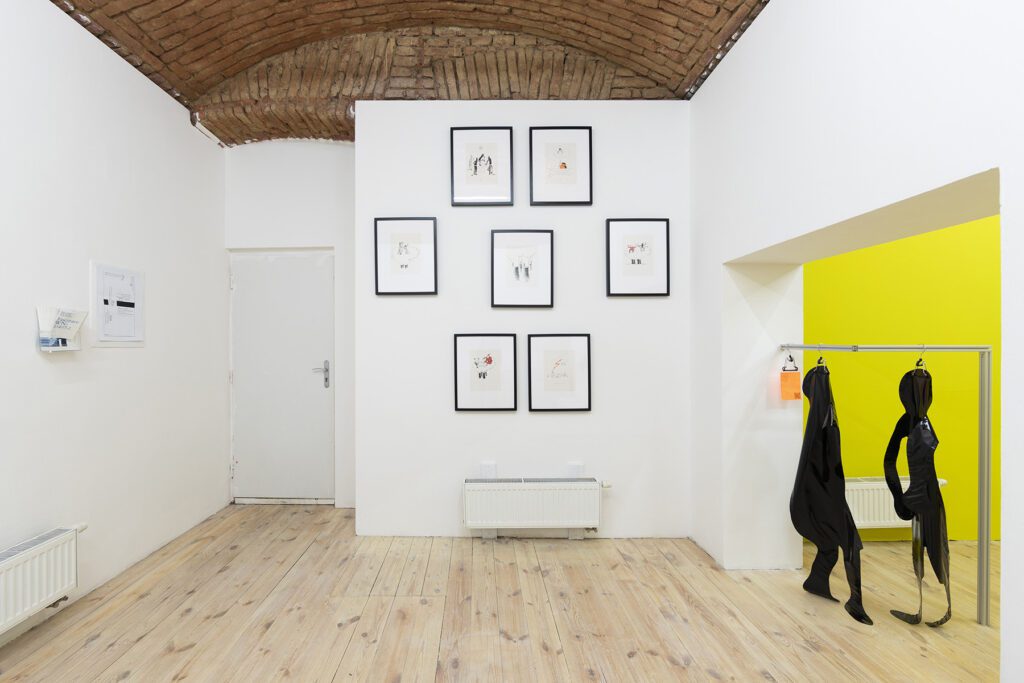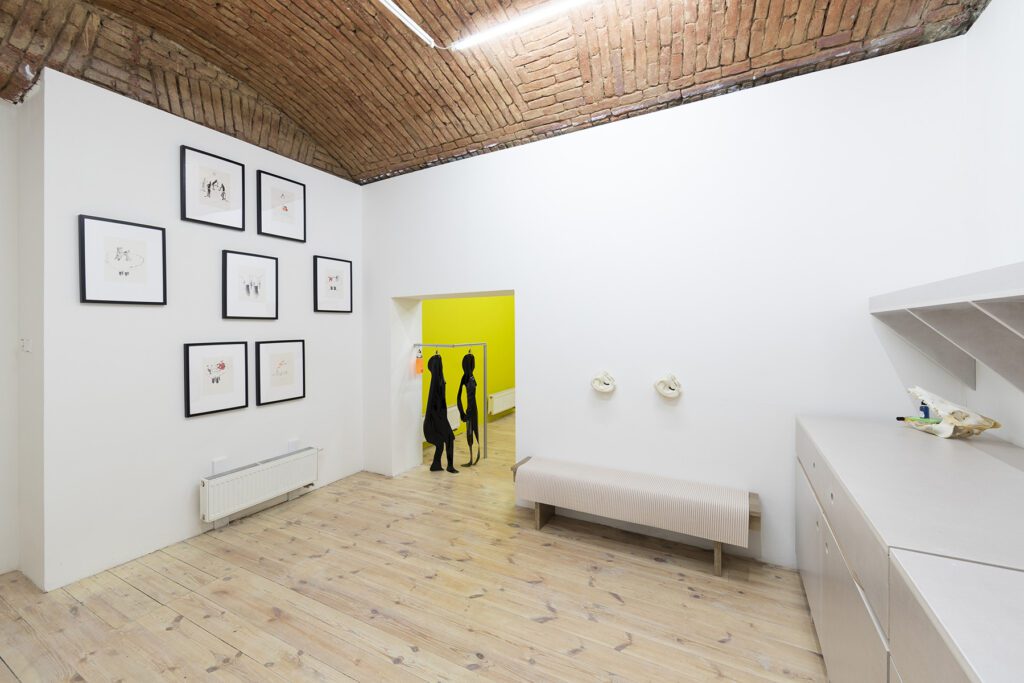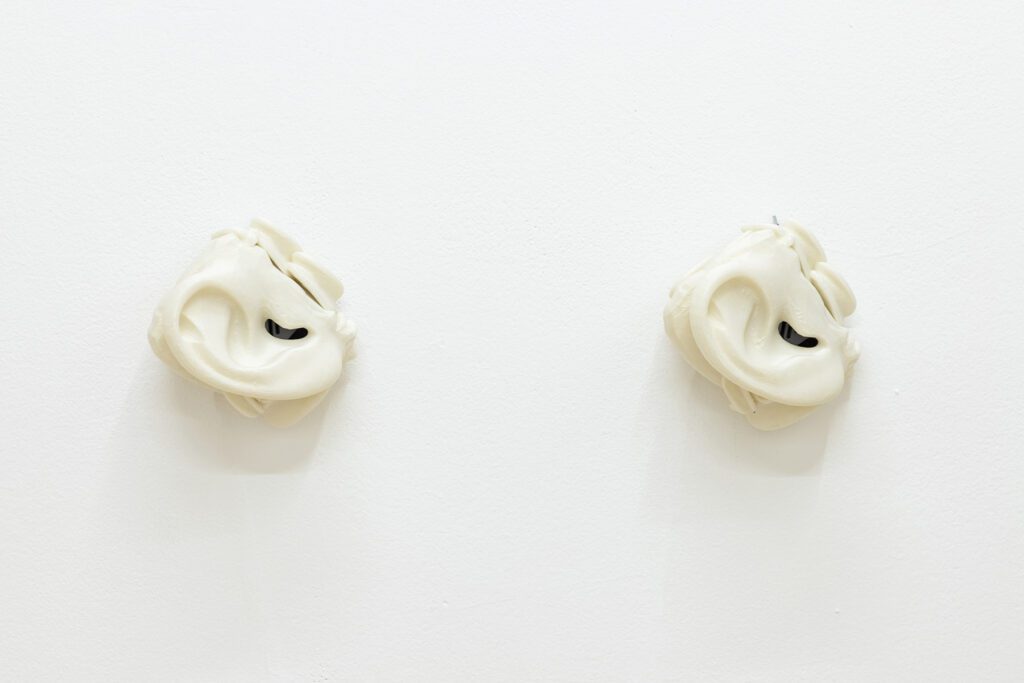28. 04. 2023 – 19. 05. 2023, opening 27. 04. 2023 6pm
The chapter Nuclear Cultures, which presents four visual projects and exhibitions, is concerned with energy, with its primary emphasis on nuclear power. This is a topic that has fascinated us since 1986, when perhaps for the first time in the history of humanity it confronted us with an interesting reflection, and we were forced to begin contemplating the question of what nuclear power really is. Naturally, here I am accentuating the first major nuclear disaster that took place at Chernobyl, although examples of certain leaks and problems can be demonstrated dating back to the Second World War.
The first exhibition, entitled Fascinace WN-I0407-1 links together likeminded local artists with the international scene. It reflects opinions, either of a positive or negative character, regarding nuclear power stations themselves. The code in the exhibition title is a reference to the American sculptor James L. Acord, who devoted his life to working with radioactive materials and their waste. The code, which he had tattooed on the back of his neck in 1993, designates the licence number of the contract thanks to which he became the only person on the planet to officially own and possess nuclear material.
The opinions espoused here ensue from a personal and curatorial fascination with this theme, to which no unambiguous answers exist. The authors engage with the reality that something may frequently become our enemy without us becoming aware of it sufficiently in time. At the same time, the topic presents us with fundamental environmental speculations concerning the economic impact on the climate crisis itself (cooling towers and waterways that are drying up), or the safe decommissioning of the nuclear power stations in question. The exhibition shows a fascination with the phenomenon of four nuclear power stations, in which each artist presents their own consistent narrative.
The Swedish artist Hilda Hellström currently lives and works in Copenhagen. She was fascinated by the powerful story of the Fukushima disaster, which was triggered by an earthquake, with an impact not only on the power station itself, but also on the local population, animals and land. In 2012 she embarked on a journey to Japan and established contact with a local rice grower and farmer who decided to return to the risk radioactive zone, because it was here, specifically in the city of Tomioko, that he had his entire life – his home, job, animals etc. Her work, entitled Materiality of a Natural Disaster, presents a testimony on the everyday life of a farmer taking care of the fragments of what remained after the catastrophe. It narrates his personal story via the general genesis of the second largest nuclear accident in the modern world. This sensitive documentary illustrates his care for the animals, as well as the likelihood that every day they will die of starvation in this ghost town. We see footage of devastated fields, animal carcasses and the story of Naoto Matsumura, who speaks of disinformation regarding the situation that has ensued. An integral part of the video is a collection of clay vases made from the contaminated soil that the artist and Mr Matsumura dug up together. According to the authorities, this clay, from which the artist has fashioned functional and decorative bowls, shall be unusable for at least 30 years to come. The works are presented in a large-format photograph in Galerie 35M2. This is the first time Hilda Hellström has exhibited her works within the Czech context.
The fact that fascination with a nuclear power station need not always have negative connotations is illustrated by the set of drawings Chort znayet! by the Czech artist Petra Herotová, who lives with her family in the vicinity of Temelín, one of the two nuclear power plants operating in the Czech Republic. She draws attention to local aspects that provide local families with a living thanks to the construction of the power station, including subsidies for cultural activities taking place here.These days those living in the area are unable to imagine the local landscape without the imposing towers of the power station. The artist identified her notion of the Russian “chort” (Soviet engineer, comrade and functionary) in the caricatures of Haďák (the pair Hanuš and Liďák, familiar from the book Malý katechismus [Little Catechism] from the former communist regime). Here the author has borrowed the figures of devils and adapted them into her own caricatures. The first work depicts the “chorts” leaning over the plan of Temelín from 1981, together with an engineer of the time who was racking his brains over the project. The devil in battle with Santa Claus symbolises the struggle of the two great powers, namely Russia and the USA, for the potential order for Temelín. The devils themselves above the cooling towers are intended to represent the vision of the influence and power of the nuclear plant on the part of the Russian comrades of the time. The sketch Oranžový rok [Orange Year] is taken almost completely from the template of Haďák. In place of the original cloud is the plan of Temelín, which provides a financial subsidy to their town every year within the framework of the Oranžový rok project.
Next is Daniela Grabosch, an artist of German origin who is currently based in Vienna. In her work I prefer facts to moondust she takes as her starting point a fascination with the darkest narrative of the nuclear disaster at Chernobyl. At 01:23, early on the Saturday morning of 26 April 1986, the fourth reactor at the nuclear complex in Chernobyl exploded. The artist takes her inspiration from the poem Heavy Water by Mario Petrucci, in which his fears as an artist, historian and humanist are combined. Here he presents an intimate image of everyday life, which has been radically altered. The book contains motifs drawing upon the testimonies of witnesses who are struggling to reconcile themselves to an immense, initially invisible catastrophe, not only on their own bodies. Petrucci’s descriptions are relatively realistic, their terminology anchored in science, clearly outlining cases of insurmountable threat. The poem is full of contrasts – the chilling atmosphere escalating into human compassion within the context of a natural disaster. The artist works with an installation of figurative black forms, which amorphously refer to irradiated bodies or fragments thereof which remain after the nuclear catastrophe. The onerous impression is further augmented by the material – glossy, artificial, suspended inertly and insubstantially. These fragments, once living bodies, have become oleaginous, oozing imprints. In addition to this, there is also a box demonstrating the life of a tiny crystal, which will progressively grow throughout the entire duration of the exhibition.
The final artist is Vojtěch Radukalan, whose exhibition presents his fascination with the Zwentendorf nuclear power station in Austria. The story of the plant is unique, since it was never launched into operation. The Austrians are fierce opponents of nuclear power, as documented by a referendum which was held in 1978. As a result of the referendum, the newly constructed nuclear power station to the north-west of Vienna never entered service. This mausoleum, which would require just one press of a button in order to set the entire power station in motion, has also captivated the imagination of Vojtěch Radukalan. In his work, the artist reacts to this event by means of a computer game in which three plot lines with a definite end are offered to viewers. In video form, the role of the viewers illustrates how easy it is to form various convictions and how you may find yourself in conflicting situations, or alternatively, with a certain amount of assistance and co-operation, find a more accommodating solution. The compilation of the video and the individual opinions pleasantly reflects the engagement of specific viewers.
curator: Tea Záchová
photos: Peter Kolárčik
photo for the exhibition: James Acord, Roundtable, Hanford, 1999
The project is realised with the financial support of the Capital City of Prague. Prague, the Prague 3 Municipal District, the Ministry of Culture and the State Culture Fund of the Czech Republic. Thank you for your support.


